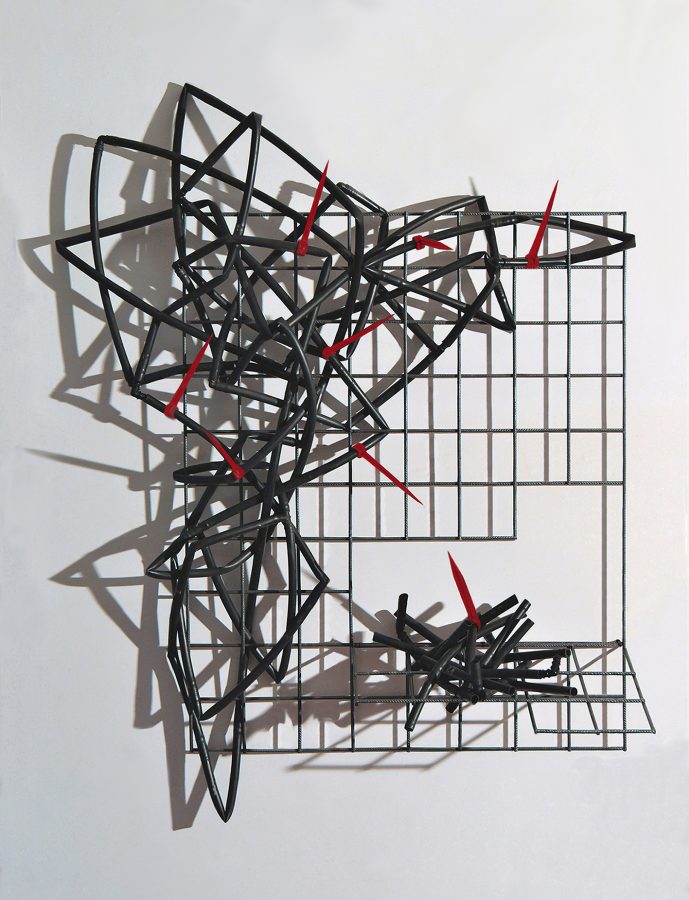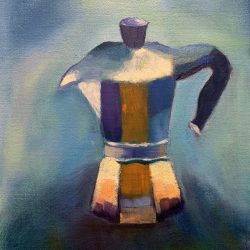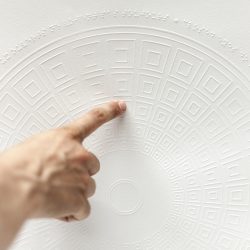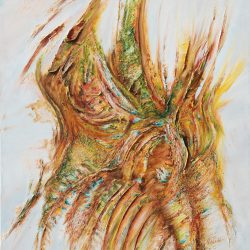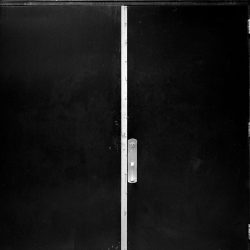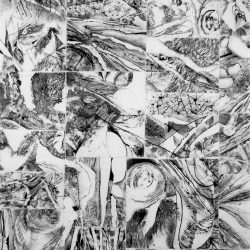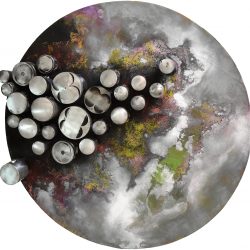work
POTERE AGLI SFRIDI
| category | Other |
| subject | Abstract |
| tags | Riciclo / Reticolo / Aggetto |
| base | 107 cm |
| height | 137 cm |
| depth | 33 cm |
| year | 2021 |
Assemblage of salvaged objects, on welded iron mesh - Single work
"Scraps," remnants of industrial, craft and even household processing, are waste par excellence. Even by optimizing the use of materials as much as possible, at the end of the work there are always leftovers to be disposed of.
Already stacked, folded or stacked to be taken to the landfill, however, scraps sometimes convey one last message before ending up in oblivion.
It is the charm of the discarded matter that is arranged, quite casually, to create games of lines, intersections and accumulations, as well as lights and shadows, releasing an expressive power that could be called "involuntary art."
"Power to Waste," featuring discarded irrigation pipes, aims to honor precisely those objects that, although they have already fulfilled their original function, prove they are still entitled to a new context in which to perform.
The old polyethylene pipes cling and crowd onto the electrowelded mesh, insinuating themselves between its meshes and self-supporting themselves through contrasting play of forces.
The mesh, for its part, by bending outward a portion of the weave, offers a kind of projecting shelf, accommodating the most minute scraps, unable to take part in the main texture.
Marked in ringing red, the old irrigation system supports that dot the composition stand proudly in the void by virtue of their lanceolate "silhouette."
"Scraps," remnants of industrial, craft and even household processing, are waste par excellence. Even by optimizing the use of materials as much as possible, at the end of the work there are always leftovers to be disposed of.
Already stacked, folded or stacked to be taken to the landfill, however, scraps sometimes convey one last message before ending up in oblivion.
It is the charm of the discarded matter that is arranged, quite casually, to create games of lines, intersections and accumulations, as well as lights and shadows, releasing an expressive power that could be called "involuntary art."
"Power to Waste," featuring discarded irrigation pipes, aims to honor precisely those objects that, although they have already fulfilled their original function, prove they are still entitled to a new context in which to perform.
The old polyethylene pipes cling and crowd onto the electrowelded mesh, insinuating themselves between its meshes and self-supporting themselves through contrasting play of forces.
The mesh, for its part, by bending outward a portion of the weave, offers a kind of projecting shelf, accommodating the most minute scraps, unable to take part in the main texture.
Marked in ringing red, the old irrigation system supports that dot the composition stand proudly in the void by virtue of their lanceolate "silhouette."



